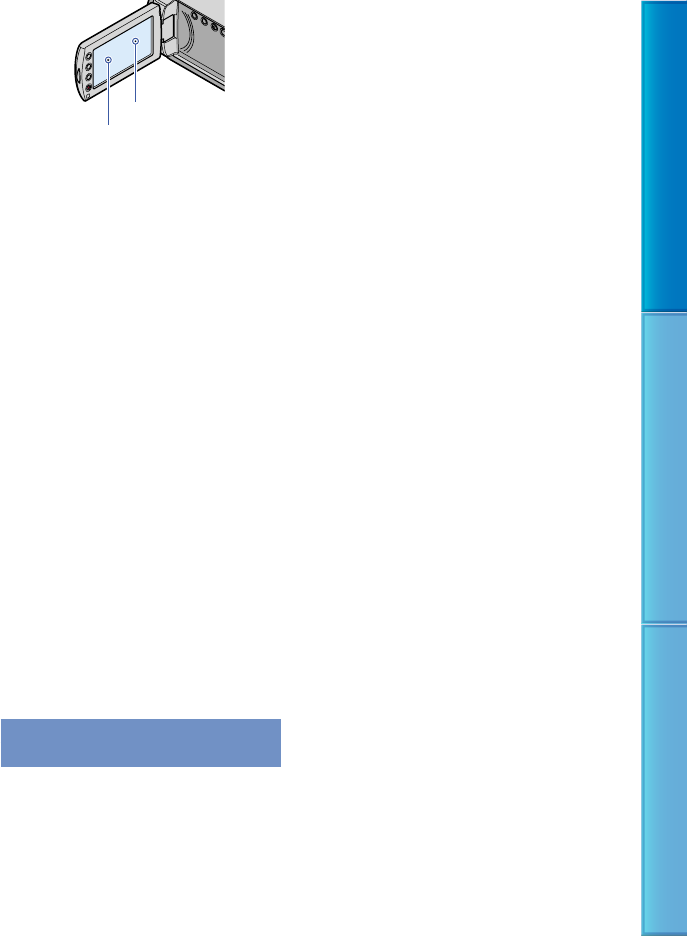
14
Table of Contents Useful Recording Techniques Index
Exposing the LCD screen, or the lens to direct
sunlight for long periods of time may cause
malfunctions.
Do not aim at the sun. Doing so might cause
your camcorder to malfunction. Take images
of the sun only in low light conditions, such as
at dusk.
About changing the language setting
The on-screen displays in each local language
are used for illustrating the operating
procedures. Change the screen language before
u
sing your camcorder if necessary (p. 75).
Recording
Before starting to record, test the recording
function to make sure that the image and sound
are recorded without any problems.
Compensation for the contents of recordings
cannot be provided, even if recording or
playback is not possible due to a malfunction of
the camcorder, storage media, etc.
TV color systems differ depending on the
country/region. To view your recordings on a
TV, you need a PAL system-based TV.
Television programs, films, video tapes,
and other materials may be copyrighted.
Unauthorized recording of such materials may
be contrary to the copyright laws.
Notes on using the Hard Disk Drive
Handycam
Save all your recorded image data
To prevent your image data from being lost,
save all your recorded images on external media
periodically. It is recommended that you save
the image data on a disc such as a DVD-R using
your computer (see Operating Guide). Also, you
can save your image data using a DVD writer, a
VCR, or a DVD/HDD r
ecorder (p. 53).
Do not apply shock or vibration to your
camcorder
The hard disk of the camcorder may not be
recognized, or recording or playback may not
be possible.
Especially, during recording/playback, do not
apply shock. After recording, do not apply
vibration or shock to the camcorder, while the
ACCESS lamp is lit.
When using a shoulder belt (sold separately), do
not crash the camcorder against an object.
Do not use your camcorder in very loud areas.
On the drop sensor
To protect the internal hard disk from shock
by dropping, the camcorder has a drop sensor
f
unction (p. 77). When a drop occurs, or
under a non-gravity condition, the block noise
made when this function is activated by the
camcorder may also be recorded. If the drop
sensor catches a drop repeatedly, recording/
playback may be stopped.
Notes on battery pack/AC Adaptor
Be sure to remove the battery pack or the AC
Adaptor after turning off the camcorder.
Note on operating temperatures
When the temperature of the camcorder
becomes extremely high or extremely low, you
may not be able to record or play back on the
camcorder, due to the protection features of the
camcorder being activated in such situations.
In this case, an indicator appears on the LCD
s
creen (p. 89).
When the camcorder is connected to a
computer
Do not try to format the hard disk or music file
storage area of the camcorder using a computer.
If you do so, your camcorder may not operate
correctly.
Note on using the camcorder at high
altitudes
Do not turn on the camcorder in a low-pressure
area, where the altitude is more than 5,000
meters (16,000 feet). Doing so may damage the
hard disk drive of your camcorder.
Black points
White, red, blue or green points


















